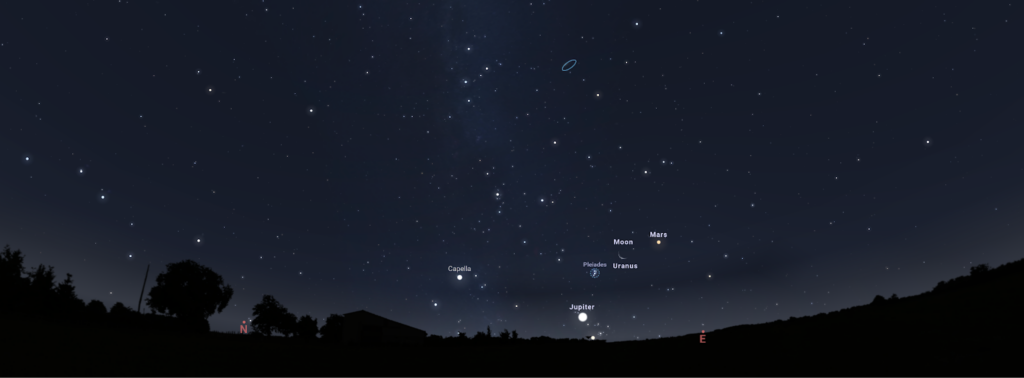Since June 20, we are already immersed in the astronomical summer in the northern hemisphere and winter in the southern hemisphere.
This is the time of year when, due to rising temperatures, we tend to spend more time looking at the sky.
The planets begin to be visible.
At dusk, at the end of the month, between the lights of twilight, Mercury and Venus will be visible.
From this month, Venus becomes again the “evening star” or “evening star”, as the Greeks called it, Hesperus as opposed to Phosphoruswhich was for them their morning twin, since they considered them to be two different planets.
From shortly before midnight, the other planets visible to the naked eye began to appear.
The first, Saturn, almost all night in Aquarius; then Mars and Jupiter, visible the last hours in Aries and Taurus.
As for the telescopic planets, Neptune will be observable almost all night in Pisces and Uranus the last hours in Taurus.
The star Aldebaran is almost tangential on the horizon, and above it Jupiter, the Pleiades, Uranus, the Moon and Mars.

PLANETS
Mercury can be observed most of July in the evening twilight over the W-NW horizon.
The second week is the most favorable, although it is on the 22nd when it reaches a maximum elongation of 26.9º E of the Sun.
Venus is visible with magnitude -3.9 in the early part of the evening twilight.
At the beginning of July it is still visible with great difficulty due to its low altitude over the W-NW after sunset, although its visibility is gradually improving as the month progresses.
It moves through the constellations of Gemini, Cancer and Leo.
Mars is seen in the late morning and at dawn, with magnitude 0.9.
The first third of July it moves through the eastern part of Aries, and through Taurus the rest of the month.
Jupiter is observed at dawn on the E-NE horizon, shining with magnitude -2.1 in Taurus.
With the passing of the days, its sunrise is advanced, until it occurs at the end of July two hours before it begins to get light.
Saturn is visible most of the night, higher in the early morning.
It shows a magnitude of 0.9 in the eastern part of Aquarius where, after remaining stationary at the beginning of the month, it slowly begins its retrograde motion.
At the end of July it rises in the E a few minutes after the end of evening twilight.
Meteor showers
Four meteor radiants will be visible: the July Pegasids, the Gamma Draconids, the southern Delta Aquarids, the only one with outstanding activity, and the Alpha Capricornids.
The Delta Aquarids are seen between mid-July and mid-August.
Its radiant, located about 15º N of the star Fomalhaut, reaches its highest altitude in the late morning.
Its maximum activity is expected to occur this year both on the nights of July 30-31 and the following night.
The Moon, in old waning phase, is not a great inconvenience for its observation.
Two kites relatively bright.
The brightest is 13P/Olbers, a Halley-type comet with a period of 69.4 years and a magnitude between 6 and 7.
The second will be C/2023 A3 (Tsuchi Shan-ATLAS), a comet from the Oort cloud that could be visible to the naked eye in October near its perihelion, but will now have a magnitude near 10.
Earth in its orbit
On July 5 at 05:06 UT our planet passes through aphelion, the point in its orbit farthest from the Sun, this time at 152,100,000 km.
Seen from Earth, the Sun has its smallest apparent diameter of the year (31.5 arcminutes).

Phases of the Moon
- New Moon on Friday, July 5 at 22:57 UT in Gemini
- Fourth crescent on Saturday, July 13 at 22:49 UT in Virgo
- Full Moon on Sunday, July 21 at 10:17 AM UT in Sagittarius
- Waning Quarter on Sunday, July 28 at 02:51 UT in Aries

The 10 most visible deep sky objects this July
- Ring Nebula
- Cat’s Eye Nebula
- Crescent Nebula
- Dumbbell Nebula
- Veil Nebula
- Iris Nebula
- Trifid Nebula
- Lagoon Nebula
- Eagle Nebula
- North American Nebula

This month we leave you a nice picture of the North American and Pelican Nebula taken by our collaborator Juan Torrente.










